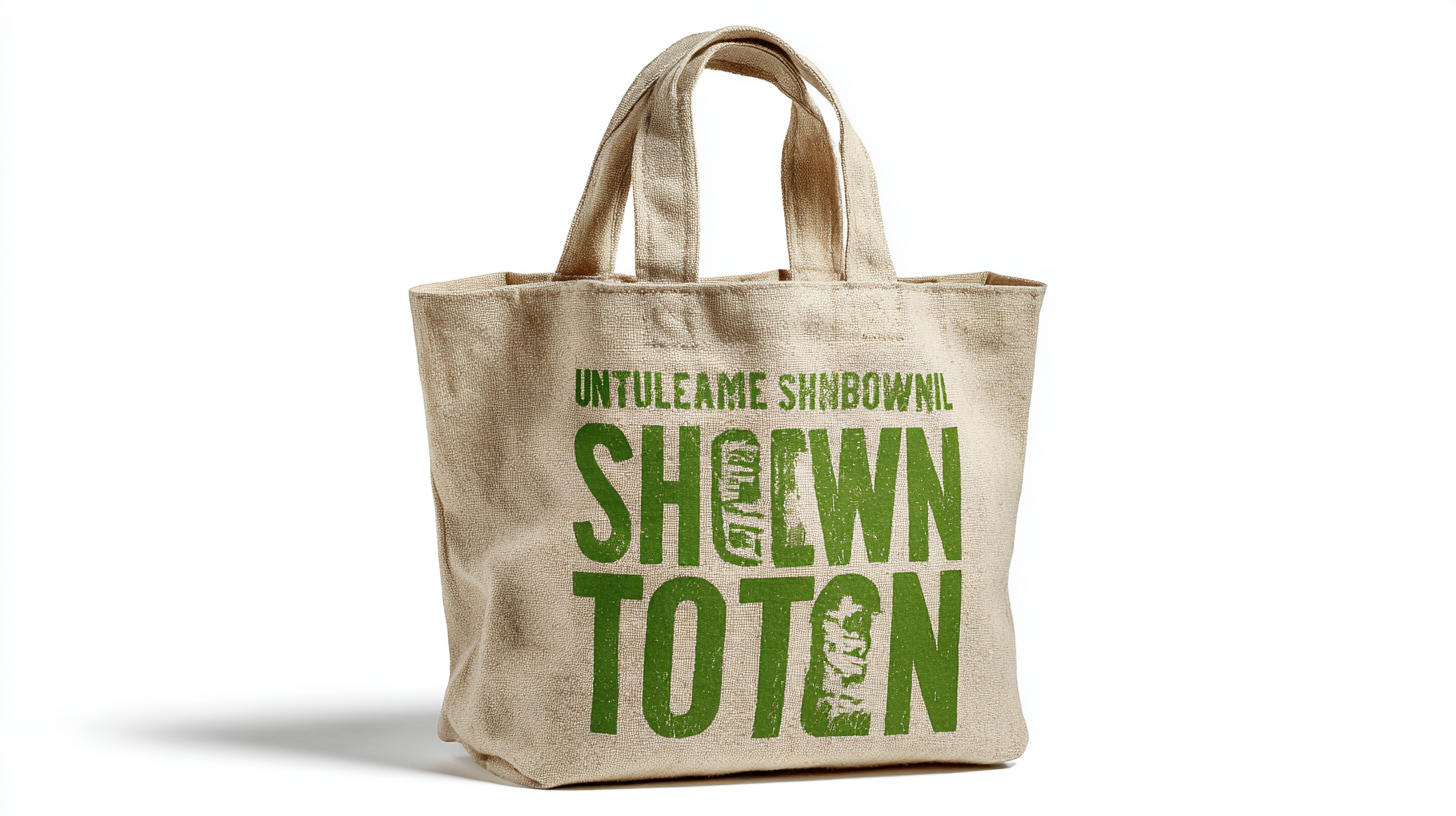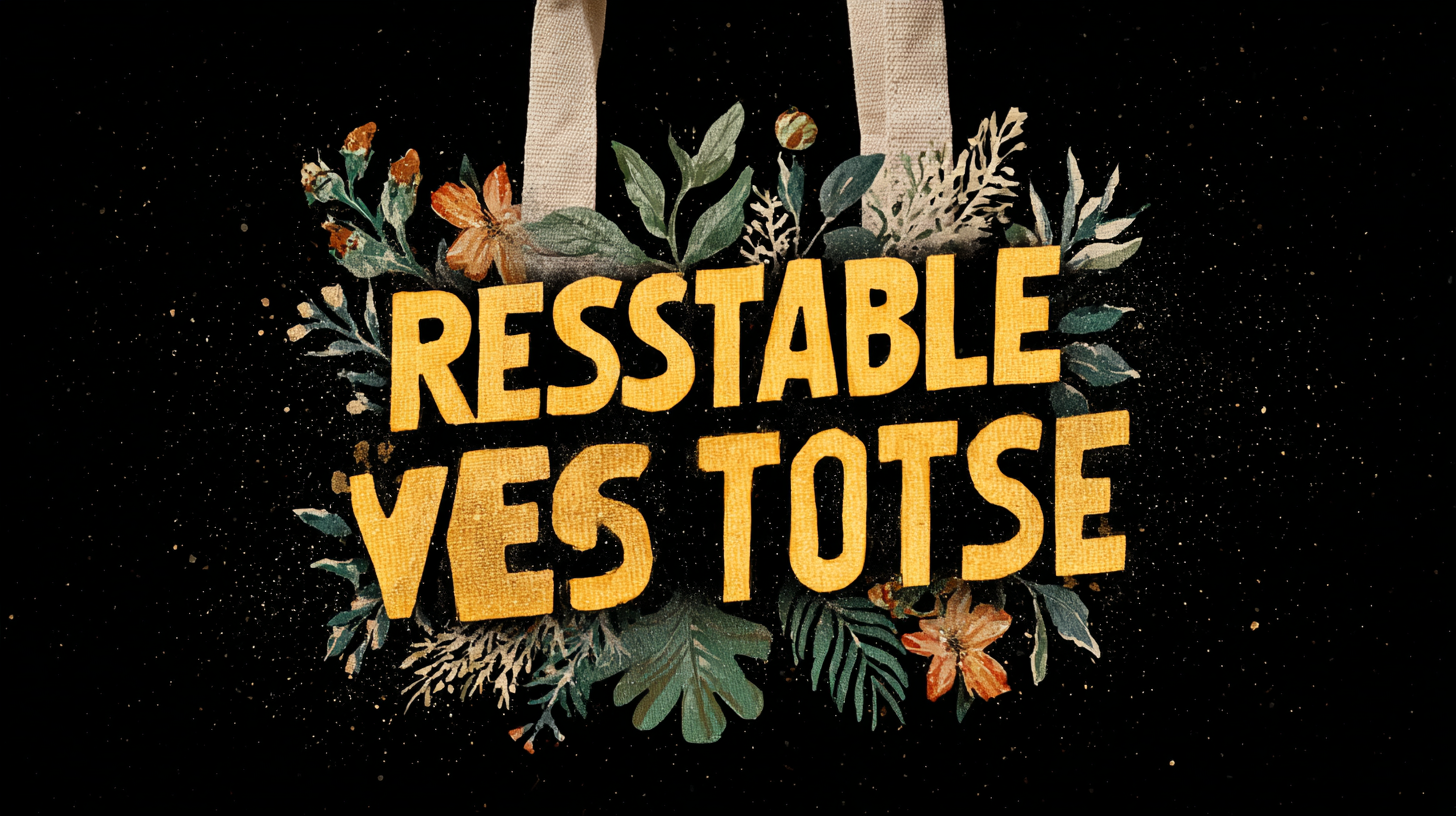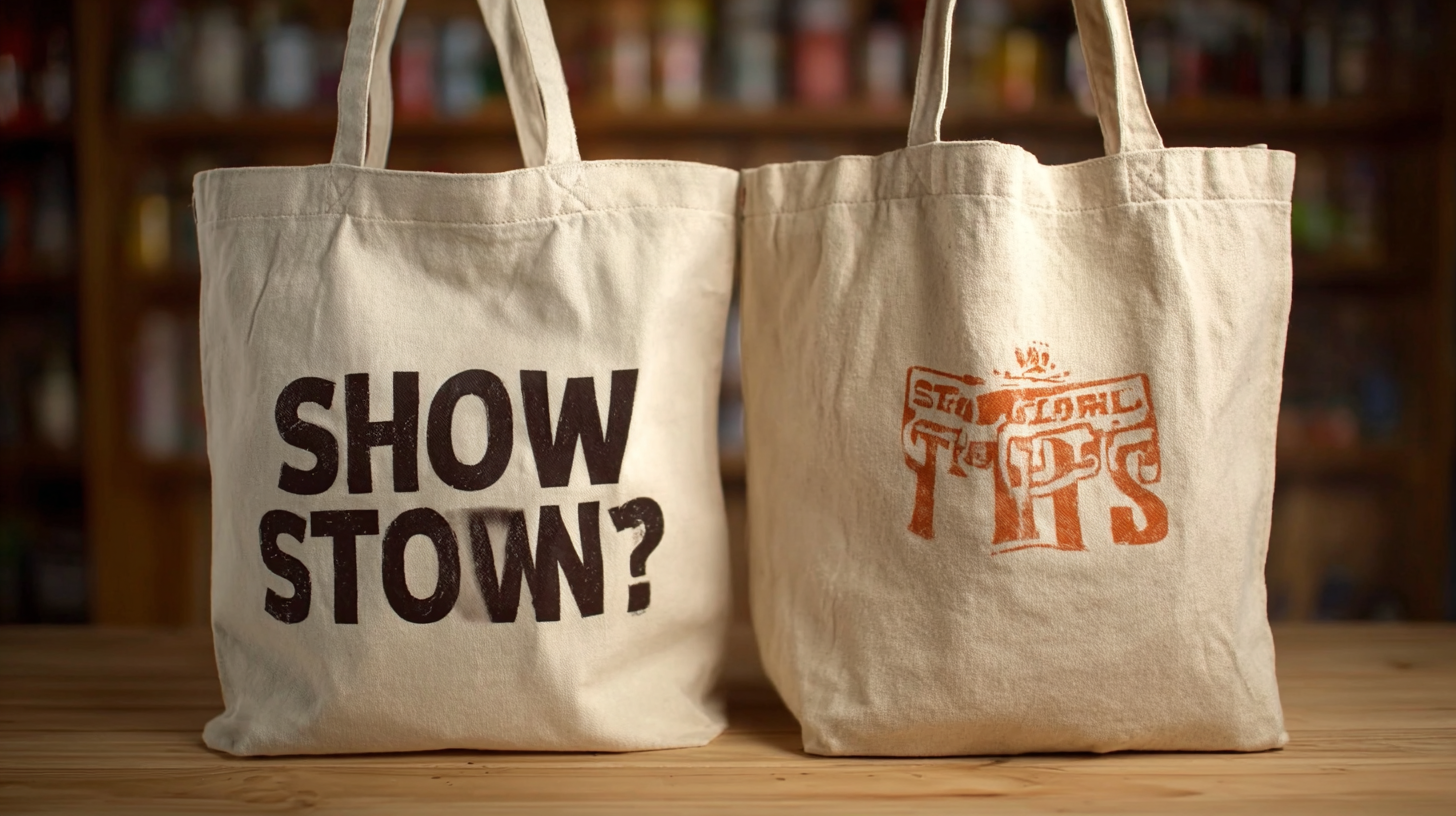As the global conversation around sustainability intensifies, eco-friendly shoppers are increasingly turning to Reusable Totes as a practical alternative to single-use plastic bags. According to the 2022 Nielsen Report, 73% of consumers are willing to pay more for sustainable products, highlighting a growing commitment to environmental responsibility. Additionally, research from the World Economic Forum predicts that if current trends continue, there will be more plastic than fish in the oceans by 2050, underscoring the urgency for sustainable shopping practices. In this blog, we will explore how to identify high-quality suppliers for Reusable Totes that not only meet consumer demand but also contribute to a circular economy, helping eco-conscious shoppers make informed choices while minimizing their ecological footprint.

The debate on the environmental impact of single-use bags versus reusable totes is more complex than it appears. While many consumers have embraced reusable bags as a more sustainable alternative, recent findings show that they may not be as eco-friendly as initially thought. In fact, single-use plastic bags, often viewed as environmental villains, can be less harmful when used just a few times before they are discarded. The true benefit of reusable bags lies in how many times they can be used; experts suggest that a reusable bag should be utilized dozens of times to offset the environmental costs of its production.
Moreover, the rising trend of accumulating reusable bags has led to new challenges. Many consumers are now guilty of treating reusable bags like disposable ones, using them infrequently or neglecting them altogether. This shift poses questions about sustainability efforts at large grocery chains, as pressures to create circular programs for reusable bags grow. If these retailers do not prioritize the development of effective reuse and recycling systems, we might find ourselves facing a new set of environmental issues, effectively transforming reusable bags into the next generation of single-use products.
When it comes to choosing the most eco-friendly reusable tote, understanding the materials used is crucial. Cotton, often touted as a sustainable option, has a significant environmental impact due to the water-intensive farming practices associated with conventional cotton production. According to a report by the World Wildlife Fund, producing just one kilogram of cotton can require up to 10,000 liters of water. Organic cotton, while a better choice, still demands considerable resources, but it does reduce pesticide use, making it a more eco-conscious alternative.
On the other hand, totes made from recycled materials, such as recycled PET (rPET), stand out for their lower environmental footprint. The Ellen MacArthur Foundation reports that producing rPET can use up to 59% less energy compared to virgin PET. Additionally, these totes can significantly contribute to waste reduction, thus supporting a circular economy. Biodegradable options, often made from materials like jute or hemp, are also gaining traction. These natural fibers decompose more readily than synthetic alternatives, making them a better choice for eco-friendly shoppers who are conscious of their impact on the planet. Examining the environmental implications of each material helps consumers make informed decisions and drive sustainable practices in the industry.
This chart compares the environmental impact of different reusable tote materials. A lower score indicates a more eco-friendly option for shoppers seeking sustainable choices.
 When it comes to choosing the perfect reusable tote, eco-friendly shoppers tend to have a specific set of preferences that guide their decisions. A primary consideration is the material used in the tote's construction. Many consumers are increasingly opting for bags made from organic cotton, recycled materials, or sustainable fabrics that minimize environmental impact. Shoppers are not just looking for a stylish accessory; they desire durability and the assurance that their purchase contributes positively to the planet.
When it comes to choosing the perfect reusable tote, eco-friendly shoppers tend to have a specific set of preferences that guide their decisions. A primary consideration is the material used in the tote's construction. Many consumers are increasingly opting for bags made from organic cotton, recycled materials, or sustainable fabrics that minimize environmental impact. Shoppers are not just looking for a stylish accessory; they desire durability and the assurance that their purchase contributes positively to the planet.
Functionality is another key factor. As eco-conscious consumers seek to reduce waste, versatility becomes essential. Totes that can easily transition from grocery trips to beach outings are highly favored. Additionally, features like foldability for easy storage, waterproofing, and ample space play crucial roles in a tote's appeal. Shoppers also appreciate brands that prioritize ethical production practices, as transparency in sourcing and manufacturing enhances their trust and align with their values. In this competitive market, understanding these consumer preferences is essential for brands aiming to make a lasting impact in the eco-friendly community.
As eco-conscious consumers increasingly turn to reusable totes, understanding the long-term financial benefits becomes paramount. A recent study by the Environmental Protection Agency (EPA) indicates that a single-use plastic bag costs about $0.05 to $0.15, while a high-quality reusable tote can range from $1 to $5, depending on the material and brand. While the initial investment for a reusable tote may seem higher, the cost-effectiveness becomes clear over time. If a consumer uses a reusable tote 100 times, they could save anywhere from $4 to $14 compared to buying single-use bags.
Moreover, according to a report from the Biodegradable Products Institute, switching to reusable bags not only leads to significant savings but also has a substantial positive environmental impact. For instance, if a family of four switches to reusable totes and uses them for grocery shopping, they could potentially prevent more than 300 plastic bags from entering landfills each year. Given that plastic bags take hundreds of years to decompose, the eco-friendly shopper not only benefits financially in the long run but also contributes to reducing the burden on our planet. With these long-term savings and environmental advantages in mind, the choice to invest in reusable totes is becoming a no-brainer for savvy shoppers.
| Tote Type | Material | Price (USD) | Lifespan (Years) | Estimated Cost Savings (USD) | Eco-Friendly Score (1-10) |
|---|---|---|---|---|---|
| Cotton Tote | Organic Cotton | 15 | 5 | 200 | 8 |
| Recycled Plastic Tote | Recycled PET | 20 | 3 | 120 | 9 |
| Jute Tote | Natural Jute | 12 | 7 | 140 | 7 |
| Insulated Tote | Nylon | 25 | 4 | 100 | 6 |
| Canvas Tote | Cotton Canvas | 18 | 6 | 160 | 8 |
In today's eco-conscious market, the selection of reusable totes has expanded significantly, making it essential for consumers to understand which brands offer the best options. A recent report from the Environmental Protection Agency noted that about 30 million plastic shopping bags are used every day in the United States alone. This alarming statistic has driven many shoppers to seek sustainable alternatives, leading to an influx of reusable tote bags designed for both functionality and environmental impact.

Top brands like Baggu, Reusable Totes, and Earthwise have emerged as frontrunners in the reusable market. Baggu claims that their totes can replace up to 700 plastic bags over their lifespan, which aligns perfectly with the consumer trend towards reducing plastic waste. Moreover, a 2021 industry analysis showed that the global market for reusable bags is projected to reach $8.3 billion by 2025, indicating a strong shift in consumer behavior toward more sustainable options. With innovative designs and a commitment to sustainability, these brands are leading the way as eco-friendly shoppers weigh their options for the best reusable totes available.